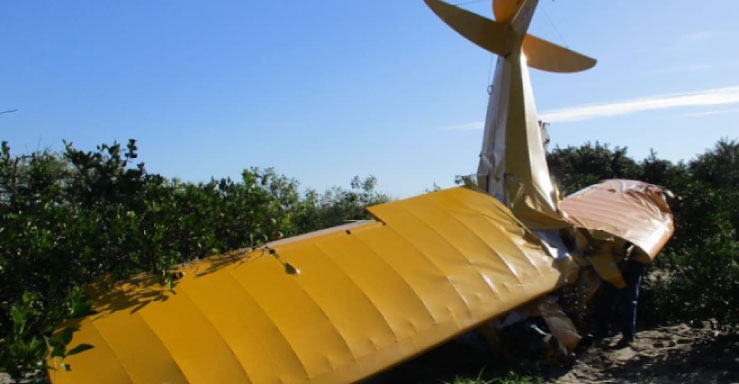Photo by: General Aviation News
The flight instructor reported that the airline transport pilot receiving instruction had not flown a float-equipped airplane in three years, so the flight instructor considered the training flights as review.
The flight instructor stated that, during their two-hour morning flight near Winter Haven, Florida, the pilot receiving instruction sat in the front seat of the Piper J-3 Cub and that he tended to “fly too slow” after takeoff and “turn sharply.” The instructor further stated that he had to “push the nose down on several occasions.”
After eating lunch and refueling the airplane, the afternoon flight began, with the pilot receiving instruction sitting in the rear seat. The instructor estimated that they flew about an hour when the accident occurred.
Although the flight instructor did not recall the details of the accident, he did recall thinking that the pilot receiving instruction might not have been able to see the instruments well from the rear seat or that he was being inattentive. The pilot receiving instruction had no recollection of the accident flight.
A witness near the accident site stated that he saw the airplane fly one low pass over the lake, circle to the right, and then come around and descend again toward the lake. The witness stated that airplanes typically either land on the lake or fly a low pass but that the accident airplane made a small splash on the second pass when the right float touched the water. The airplane then “accelerated up” a couple hundred feet and started veering to the right in a “big arc.”
The witness also stated that the turn “seemed like a steep angle” and that, at the top of the arc, he saw “the whole top of the airplane and it just continued downward.”
The witness could not hear the engine when the airplane was descending.
He stated that the airplane hit the ground in a near-vertical nose-down attitude and that the airplane stayed in that position for a short time before the tail settled toward the ground.
The flight instructor and pilot receiving instruction sustained serious injuries.
During a post-accident interview, the flight instructor stated that the witness’ description of the second pass sounded as if it were a go-around maneuver. The flight instructor also stated that the pilot receiving instruction had been “making really steep turns and he was too slow on airspeed.” The instructor added that he did not correct it in time.
Post-accident examination of the wreckage revealed that the airplane came to rest in a near-vertical nose-down attitude with no ground scars or tree damage leading toward the wreckage, consistent with a near-vertical flightpath angle. The left wing sustained substantial damage.
Probable Cause: The pilot receiving instruction’s failure to maintain airspeed during a turn, which resulted in an exceedance of the airplane’s critical angle of attack and a subsequent aerodynamic stall. Contributing to the accident was the flight instructor’s failure to take remedial action in a timely manner.
In the wake of a float flying accident, Ovadia Law Group is committed to providing unwavering support and legal expertise to those affected. Our compassionate attorneys understand the complexities involved in float plane accidents and are dedicated to advocating for the rights of victims. We prioritize thorough investigation and diligent representation, aiming to secure fair compensation for injuries, loss, and suffering resulting from these tragic incidents. By choosing Ovadia Law Group, you gain access to a team with in-depth knowledge of aviation law and a steadfast commitment to achieving justice for our clients. If you’ve been impacted by a float flying accident, call us today at 1-800-674-9396 for personalized legal guidance and representation tailored to your situation. Allow us to stand by your side and fight for the justice and compensation you deserve.
Source: General Aviation News




